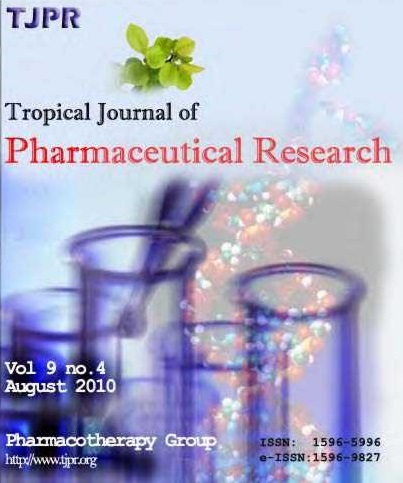Effect of trichostatin A on biological characteristics of side population cells of cervical cancer cell line (HeLa)
IF 0.6
4区 医学
Q4 PHARMACOLOGY & PHARMACY
引用次数: 0
Abstract
Purpose: To investigate the effect of trichostatin A (TSA) on biological characteristics of side population (SP) cells of cervical cancer cell line (HeLa)Methods: Side population (SP) and NSP cells were obtained from 6th generation of primary cervical cancer cells and cervical cancer cell line (HeLa). Cell surface markers (ATP-binding membrane transporter superfamily G member 2 (ABCG2), CD133, CD43, p63, Ki67, multidrug resistance (MDR) as well as cell cycle phase distribution and apoptosis, were determined. SP cells in HeLa were divided into 3 groups that received TSA at doses of 0.01, 0.05, and 0.2 μM. Untreated cells served as control. Cell growth inhibition rates of different dose groups were compared. SP cells in HeLa were divided into simple irradiation group and combined irradiation group TSA (10 % inhibition concentration (IC10) + irradiation, and values of SP cell survival fraction (SF) of the two groups under different irradiation conditions were compared.Results: The content of SP in HeLa cell line was significantly higher than in cervical cancer tissue (p > 0.05). There were no significant differences in expression levels of ABCG2, CD133, CD43, p63, Ki67, and MDR, as well as G0/G1, S, and G2/M phase distributions and apoptosis rate between HeLa cell line and cervical cancer tissue (p > 0.05). On the 3rd, 5th, and 7th day, SF value of SP cells was significantly higher in NSP cells (p > 0.05). With increasing concentration of TSA, SF value of NSP cells gradually decreased, while that of SP cells did not change significantly.Conclusion: Cervical cancer cell line (HeLa) contains SP cells which have biological characteristics of tumor stem cells. Moreover, TSA exerts good cytotoxicity and radio-sensitization effect on SP cells.曲古霉素A对宫颈癌细胞系侧群细胞生物学特性的影响
目的:探讨曲古抑素A (TSA)对宫颈癌细胞系(HeLa)侧群(SP)细胞生物学特性的影响。方法:从第6代原发性宫颈癌细胞和宫颈癌细胞系(HeLa)中分别获得侧群(SP)和NSP细胞。检测细胞表面标志物(atp结合膜转运蛋白超家族G成员2 (ABCG2))、CD133、CD43、p63、Ki67、多药耐药(MDR)、细胞周期分布和凋亡情况。将HeLa SP细胞分为3组,分别给予0.01、0.05、0.2 μM剂量的TSA。未处理的细胞作为对照。比较不同剂量组细胞生长抑制率。将HeLa中的SP细胞分为单纯照射组和联合照射组TSA(10%抑制浓度(IC10) +照射,比较两组在不同照射条件下SP细胞存活分数(SF)的值。结果:HeLa细胞株中SP含量明显高于宫颈癌组织(p >0.05)。HeLa细胞系与宫颈癌组织间ABCG2、CD133、CD43、p63、Ki67、MDR的表达水平以及G0/G1、S、G2/M期分布和凋亡率均无显著差异(p >0.05)。在第3、5、7天,SP细胞的SF值显著高于NSP细胞(p >0.05)。随着TSA浓度的增加,NSP细胞的SF值逐渐降低,SP细胞的SF值变化不明显。结论:宫颈癌细胞系(HeLa)中含有SP细胞,具有肿瘤干细胞的生物学特性。此外,TSA对SP细胞具有良好的细胞毒性和放射增敏作用。
本文章由计算机程序翻译,如有差异,请以英文原文为准。
求助全文
约1分钟内获得全文
求助全文
来源期刊
CiteScore
1.00
自引率
33.30%
发文量
490
审稿时长
4-8 weeks
期刊介绍:
We seek to encourage pharmaceutical and allied research of tropical and international relevance and to foster multidisciplinary research and collaboration among scientists, the pharmaceutical industry and the healthcare professionals.
We publish articles in pharmaceutical sciences and related disciplines (including biotechnology, cell and molecular biology, drug utilization including adverse drug events, medical and other life sciences, and related engineering fields). Although primarily devoted to original research papers, we welcome reviews on current topics of special interest and relevance.

 求助内容:
求助内容: 应助结果提醒方式:
应助结果提醒方式:


